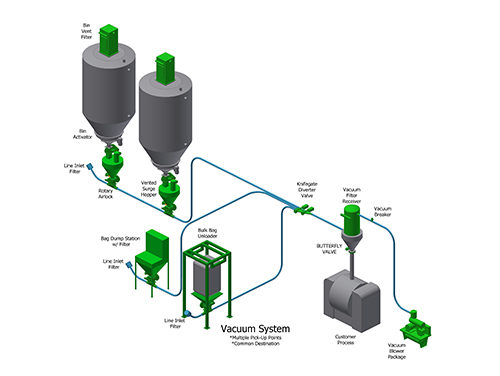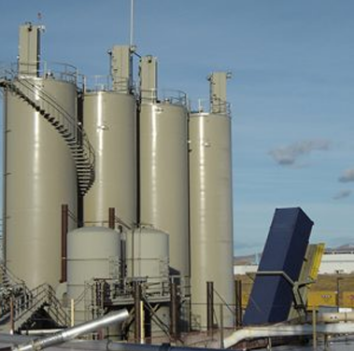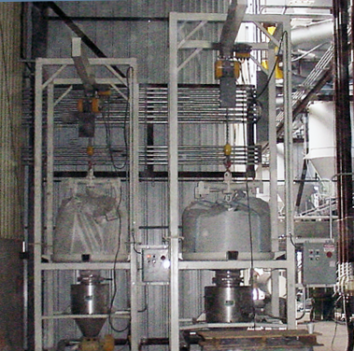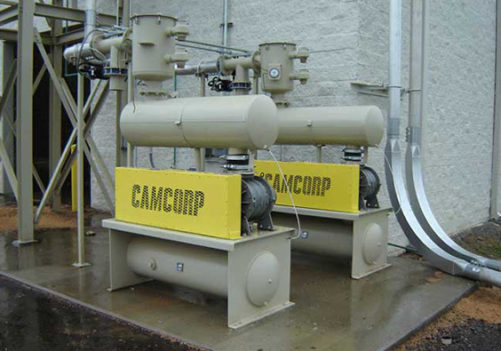In many manufacturing settings, from food ingredients to grain to factory processes, organizations rely on pneumatic conveying equipment to transfer dry bulk materials, including granules and powders. You may be starting up a new production line involving these types of substances or need to become more familiar with this technology because you are acquiring a business that uses it.
Read on for insight into pneumatic conveying. Please keep in mind that if any questions arise, the team at Camcorp will be happy to provide all the information you need.
Basics of Pneumatic Conveying
Pneumatic conveying systems enable people to move products through a facility quickly and efficiently, with minimal fuss and mess, and with a very high degree of accuracy. They are closed systems designed to keep the air free of contaminants, typically with the help of a dust collection system at points in the conveying system.
You will deploy a pneumatic conveyor for the majority of bulk, powdered materials (powders, flakes, pellets, and so on) when a roller or belt conveying system isn’t practical or appropriate.
Businesses use pneumatic conveying to move bulk materials through their facilities for processing and handling them safely and securely to avoid waste. Materials include pellets, minerals, food products (such as flour and sugar), sand, and a whole host of chemicals.
For products that are in a pasty or wet condition, pneumatic conveying isn’t a practical option, for the most part. But for transporting large amounts of small, powdery-dried products, a pneumatic conveyor is quite likely what you’ve been looking for.
What’s Included in a Pneumatic Conveying System?
A pneumatic conveying system is centered around four essential parts:
- Material Introduction Point
- Tubing
- Receiving Point
- Gas Flow Movement Device
How Does a Pneumatic Conveying Setup Function?
The system is based on an enclosed pipeline. You introduce materials into the system through some type of feeding mechanism along a tubing line of conveyance to deliver them to a receiver, also known as a termination vessel. Typically, you will install a dust collection or filter receiver system to keep the air clean as the conveying air exits the system.
A blower, fan, or other force creates a difference in pneumatic pressure (which could be referring to ordinary air or a gas such as nitrogen) to push or pull materials through the pipeline.
An air mover creates pressure when you place it at the start of the system to move materials through it. If you position the air mover at the termination of the system, it pulls air into a vacuum. So, you will be conveying material either under pressure or in a vacuum.
When you set up a pneumatic conveyor to push bulk materials through the system, you can feed them from one source but push them out to multiple outlets, giving you greater flexibility in production runs. When you set up the pneumatic conveying system to pull materials under a vacuum, you can accept materials from various input sources and collect them in one receptacle.
Advantages of Using Pneumatic Conveying
As you and fellow stakeholders in your organization consider deploying new equipment, it’s useful to keep in mind the various benefits of using pneumatic conveying.
Flexibility is due to being configurable horizontally or vertically for long distances.
It’s convenient to route the system among your existing equipment, which is variously located on the production floor.
With fewer moving parts to inspect, maintain, and repair, it’s easier on your budget.
There is also a smaller footprint for pneumatic conveying systems, so you can do more with less space at your facility.
Potential Drawbacks of Pneumatic Conveying Systems
You need to have all the relevant information to make an informed decision. Make sure that you consider potential disadvantages when it comes to using pneumatic conveying systems. Please speak with a member of our team to address any concerns you may have about deploying a new pneumatic conveying setup.
For one, if you are working with wet, sticky materials or materials that are bulky or come in larger than usual particles, pneumatic conveyance may not be an ideal solution.
And because they are often used in small-volume applications, it can be difficult if you need to move a great deal of material around.
You will likely need to include a dust collection system to account for all the materials and fugitive dust that will be extracted from the conveying system.
Connect with Camcorp Today
As you can see, there are a number of options when it comes to configuring pneumatic conveying equipment. If you have any questions about what’s involved in pneumatic conveying systems, the team at Camcorp is here to help. Learn more about our equipment or request a quote by contacting Camcorp today.





